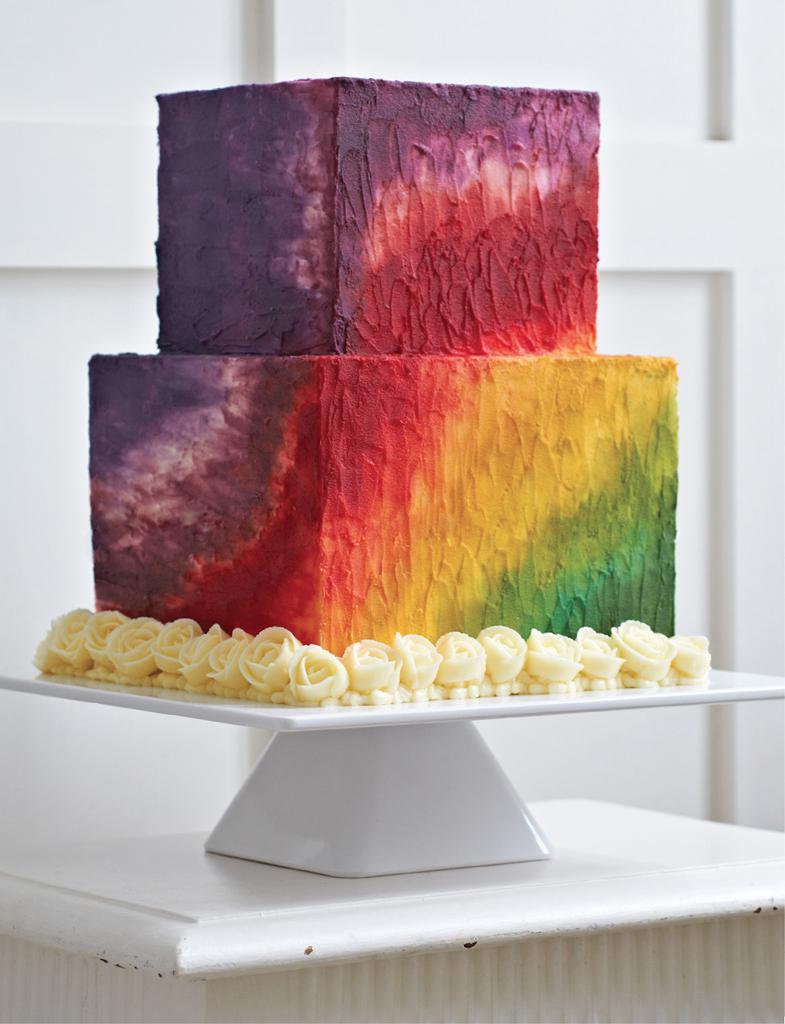The Contemporary Buttercream Bible (26 page)
Read The Contemporary Buttercream Bible Online
Authors: Christina Ong Valeri Valeriano

prepare
colourful
or
gradient
colours
of
buttercream to make this effect even more
attractive.
Patting strokes
After applying your buttercream all over your cake,
use the tip of your palette knife to repeatedly pat
the surface all the way around while it is still sticky.
This will create a unique texture.
295
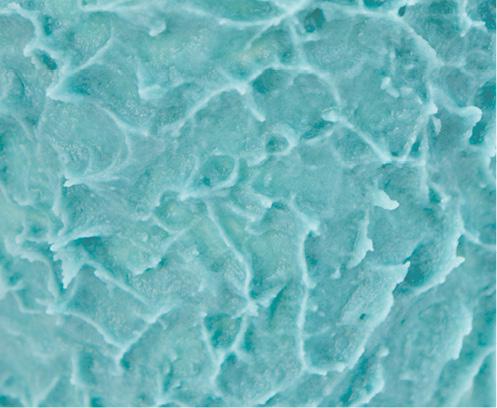
Thinning
‘Thinning’, as you might guess, just means making
the buttercream into a very soft and spreadable
consistency by adding few drops of water. The
pictures below show how thinned and unthinned
consistencies behave when you spread them. The
thinned buttercream is easier to spread or blend
with a palette knife.
Unthinned
Rough and uneven when spread with a palette
knife, unthinned buttercream is ideal for most
296
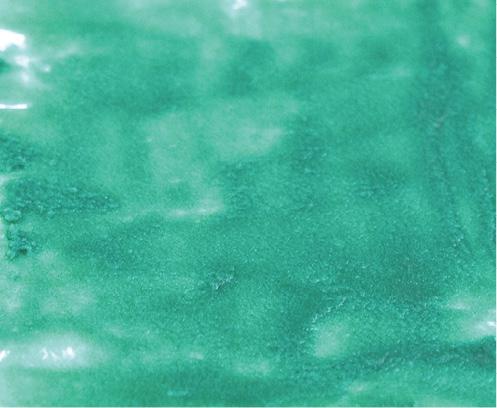
piping and decorating. This is the consistency you
will get if you follow our buttercream recipe (see
Buttercream Basics).
Thinned
When thinned, your buttercream will spread in a
smooth and level way, perfect for using with a
palette knife to create some of the effects described below.
297
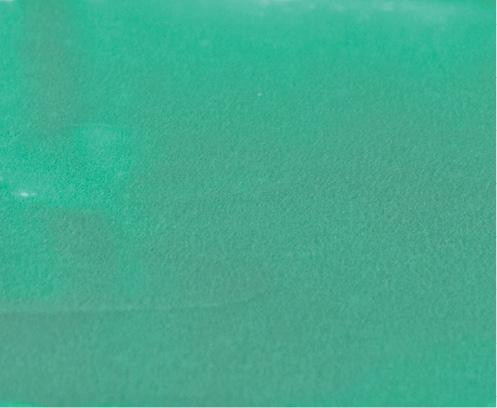
About palette knives
In this chapter we will not only use the typical
palette knife that you will probably already
have in your kitchen. Instead we have adapted
some of the techniques used by fine artists
when palette knife painting in oils, so we will
also be using an artist’s palette knife painting
set. These can be easily purchased from most
art supplies retailers. As you can see here,
they have different shapes, lengths, handles
and tips. Forget about the length and the way
they are numbered and just look at the tips of
298
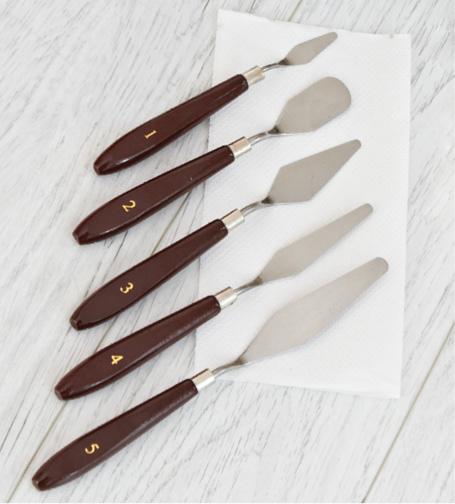
the knives as these will be useful in
determining which knife to use in a design. If
you are just using a knife for spreading you
can basically use any size, but if you want to
use it for a more specific design, like a flower
(which you will learn about in the following
pages) the size of the tip becomes important.
Use a small tip knife for small petals and other
such details, and a big tip knife for large
details. It’s a simple principle!
299
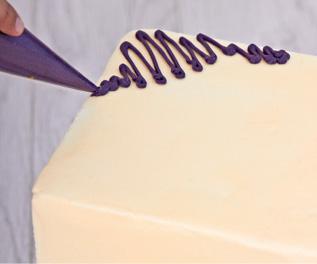
Blending
This palette knife technique requires a careful
choice of colours, otherwise the results can be a
murky mess. Select a range of colours that
complement each other and produce an over-all
pleasing effect – the clashing of just two colours
may ruin everything. The actual act of blending
them with your knife is very simple.
1 Prepare the cake by crumb-coating it. Make sure
that the tinted buttercream colours are already
thinned and in individual piping bags. Cut the tip
off the piping bags to create a small hole – there’s
no need to use a nozzle. Pipe your first colour on to the surface of the cake (A).
300
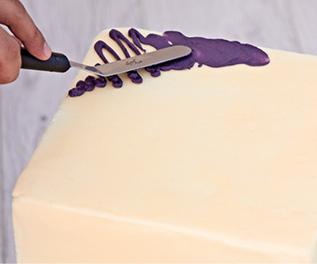
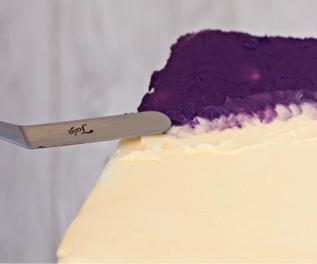
A
2 Using your palette knife, hold it about at about a
10–20 degree angle and spread the buttercream in
a small circular motion (B), or with up and down
strokes. Be careful not to press too hard with the
knife (C).
B
C
301
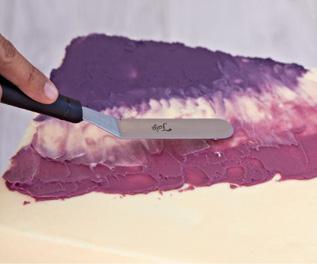
3 Pipe your next colour but make sure you leave a
small gap in between the colours. Repeat the same
process to spread the buttercream and then
gradually blend two colours together using the
same technique (D).
D
4 Just keep repeating the same process until you
have finished covering the cake with all the colours
you have prepared (E).
302
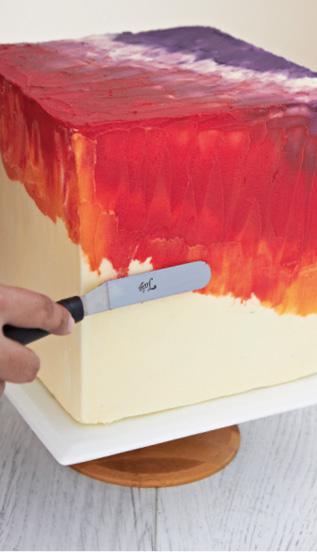
E
Tip
It can be helpful to chill your cake first in the
fridge so the surface is hard and easier to work
on. The only downside is that the tinted
buttercream you will apply could crust too
quickly because the surface is cold. If it does,
303
